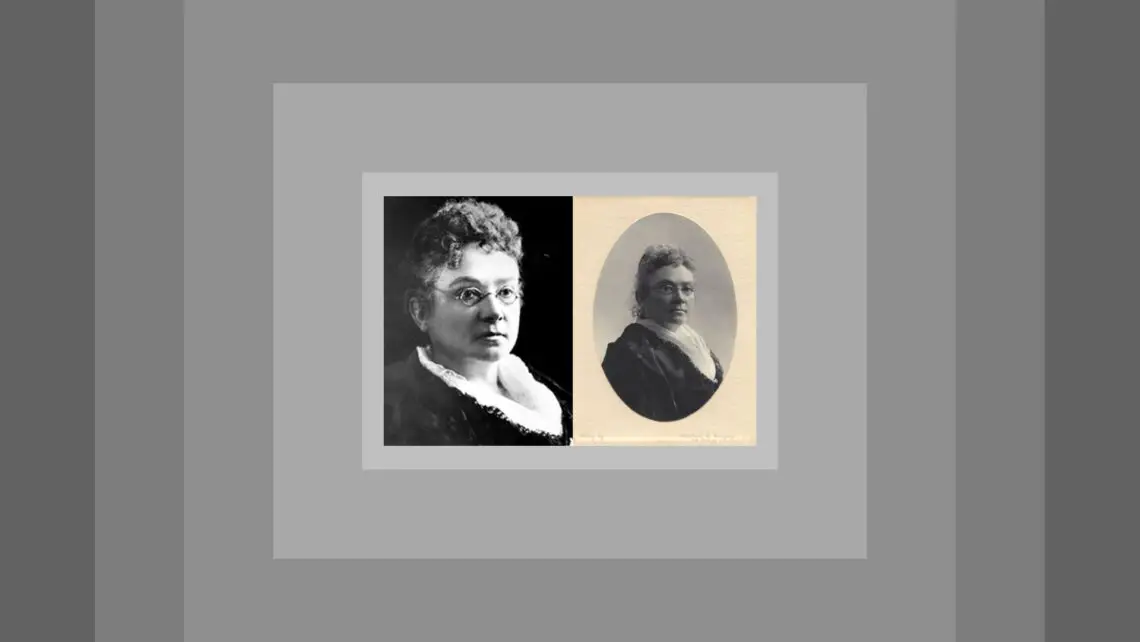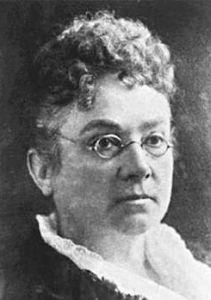“The doors of the University are not open to women and I trust they never will be,” the University’s vice-president told her.
In downtown of Toronto (Ontario of Canada) there is a well-known medical centre called Women’s College Hospital, in which my first child was born. The history of Women’s College Hospital began in 1883 with the founding of Woman’s Medical College. This came in response to the refusal of medical schools in Toronto to admit women for the study of medicine in that era. I would like to bring the following historical facts to your attention about a hero, Dr. Emily Howard Stowe. This educational information is shared here with many thanks to the source, the Library and Archives of Canada.
Emily Howard Jennings was born in 1831, on a farm in Norwich Township in Upper Canada, (now Ontario). Emily’s mother had been well-educated and believed in a good education for her daughters. She was so dissatisfied with the local schools, that she chose to instruct all her children herself. At age 15, Emily became a teacher in a one-room schoolhouse in neighbouring Summerville, where she taught for seven years. Her struggle to achieve equal opportunities for women began in 1852, when she applied for admission to Victoria College, in Cobourg, but was refused because she was female. She was, however, accepted by Toronto’s Normal School for Upper Canada, the only advanced school open to women in British North America. She graduated with first-class honours in 1854. When she was offered a position with the Brantford School Board, she quickly became the first woman principal of a public school in Upper Canada. She remained in the job until her marriage to John Stowe, a native of Yorkshire, England, in 1856. The couple moved to his family’s village of Pleasantville, near Brantford, where, over the next seven years, Emily Stowe gave birth to three children.Soon after the birth of John and Emily Stowe’s third child, John contracted tuberculosis. His illness inspired Emily to explore the field of herbal healing and homeopathic medicine, an area her mother had studied. This, together with what she saw as a serious need for women doctors, led to her decision to become a physician.
In 1865, Emily Stowe applied to the Toronto School of Medicine, but once again, she was denied admission. “The doors of the University are not open to women and I trust they never will be,” the University’s vice-president told her. Stowe was outraged. She promised herself that she would do everything possible to enable women to have the same opportunities as men.
Unable to study in Canada, she moved to the United States and enrolled at the New York Medical College for Women, a homeopathic institution in the city of New York. She obtained her degree in 1867 and returned to Canada and set up a practice in homeopathic medicine on Richmond Street in Toronto, even before obtaining her licence. She thus became the first practising female physician in Canada.
In the mid-1860’s, a reorganization in the medical profession made it obligatory for homeopathic physicians and doctors trained in the United States to take further medical courses in order to obtain their licences. But even with Dr. Stowe’s degree, the University of Toronto would not allow her entry. It was not until 1871 that Dr. Stowe and Jenny Trout, another aspiring doctor, were finally admitted to the school, and even then only by special arrangement. They were thus the first two women to attend lectures at the Toronto School of Medicine.
It was a difficult period for both of these women, since students and faculty went out of their way to humiliate them. Dr. Stowe either failed her exams or defiantly refused to sit for them and returned to her practice, still without a licence. Jenny Trout passed her exams and became the first licensed female physician in Canada.
Dr. Stowe’s experience fighting for acceptance in the medical community turned her into an ardent feminist. In 1877, she helped found the influential Toronto Women’s Literary Guild, Canada’s first suffragette group set up to fight for women’s rights and improved working conditions. Thanks to pressure from club members, some higher education in Toronto was soon made available to women. In 1883, the club was renamed the Canadian Women’s Suffrage Association.
Dr. Stowe continued to break down important barriers for the next generation of women doctors. Determined to help make medical education more readily available for women, she put relentless pressure on the University of Toronto to reverse its policy. No one was prouder than Emily Stowe when the first woman doctor to graduate from a Canadian medical school, in 1883, was her own daughter, Augusta Stowe-Gullen. The same year that Dr. Stowe’s daughter graduated from medical school, a public meeting of the Toronto Women’s Suffrage Association, with Dr. Stowe at the forefront, led to the creation of the Ontario Medical College for Women.
In 1888, Dr. Stowe attended an international conference of suffragettes in Washington, D.C. She returned home to revitalize the women’s movement in Canada and continued the fight to win the vote for women. Her vehicle was the Dominion Women’s Enfranchisement Association, which she founded in 1889. She became its first president and held the position until her death. Emily Stowe was attending an international women’s convention in Chicago in 1893 when she suddenly fell from the platform and broke her hip. She was reluctantly forced to stop practising medicine, but not her fight for women’s rights. In this role, she, along with her daughter Augusta, participated in a highly-publicized “mock parliament” designed to publicize the inequalities faced by women. It was a parliament where the all-women participants, using the same arguments men had used against them, refused to give men the vote. It did not go unnoticed.
John Stowe died in 1891 and Emily Stowe 12 years later, in 1903. It would be another 14 years before women got the vote in Canada and much of the credit goes to Dr. Emily Stowe, teacher, physician and passionate suffragist.
Source: Library and Archives Canada






Thanks, Dr Nabav, for sharing with us such beautifuol and meaningful stories.